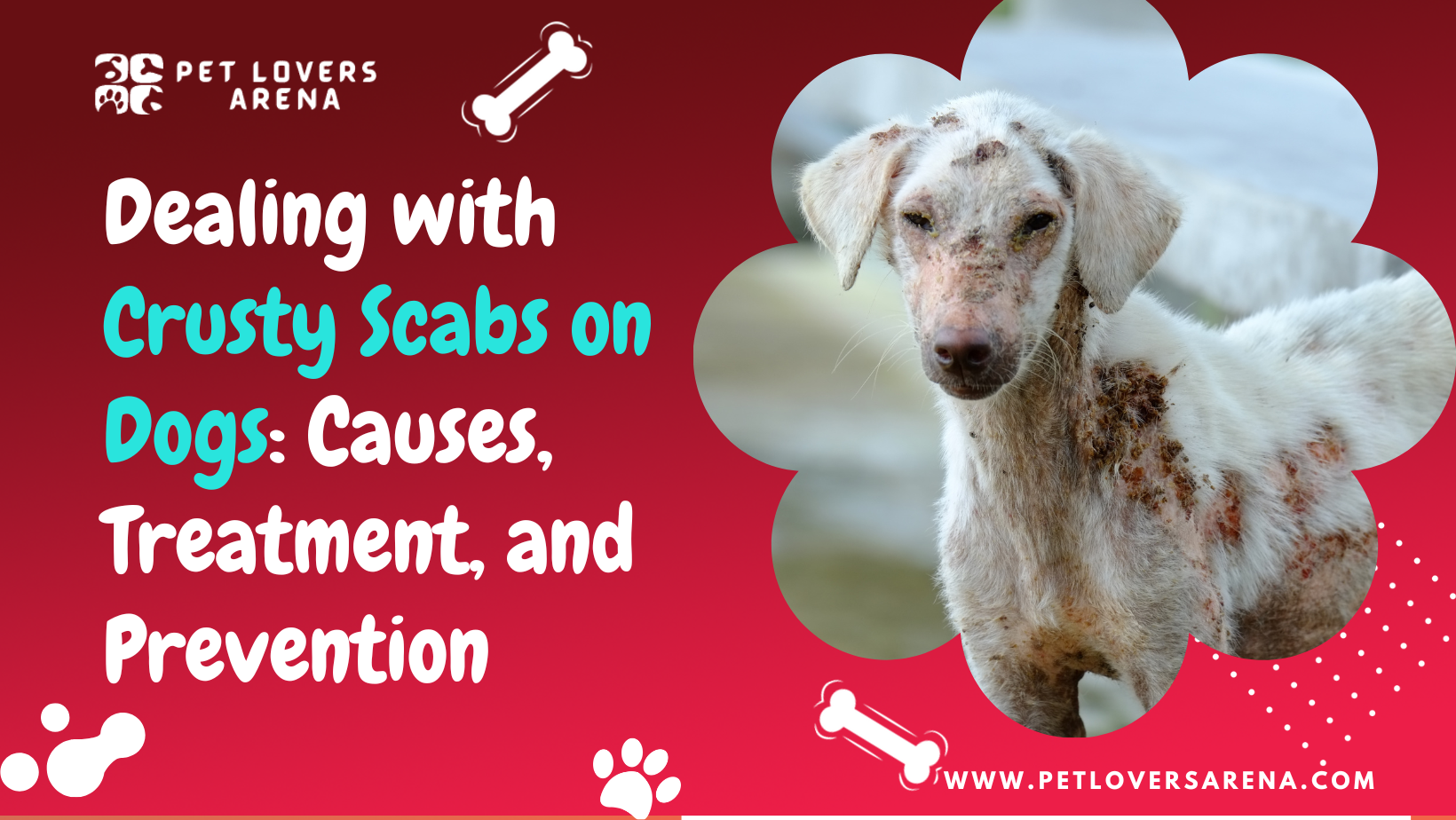Of late, have you come across your dog scratching his face or legs a lot? Also, have you encountered something bumpy and hard on its skin while indulging in one of those relaxing bath sessions? Well, before you panic, you need to know that these crusty formations around your dog’s skin are nothing but scabs.
The scabs are an outcome of allergies and skin infections. In most cases, it’ll heal on its own with proper care and treatment. In this piece, we will discuss what causes scabs, how to treat them in dogs, and how to prevent them.
But before getting into details about the treatment and prevention of scabs in dogs, it is important to know what scabs are. So here we go.
What is a Scab?
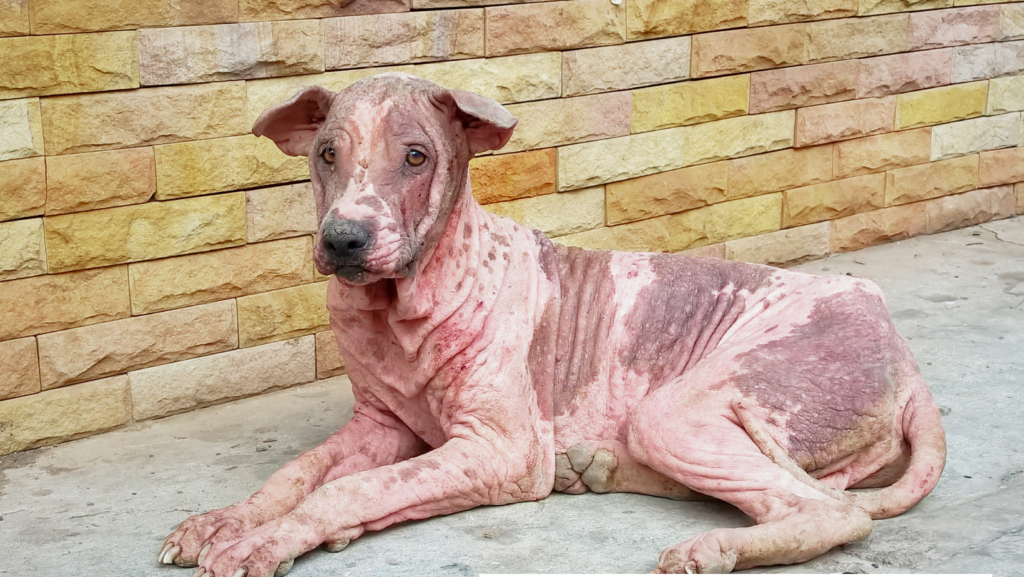
When the skin is bruised, wounded, or scraped, the area begins to bleed. Within minutes, blood cells begin clumping together around that area and form a clot. This is a protective layer mostly made of platelets, red blood cells, and fibrin.
These clots shield the wound and prevent infection and further blood loss. Now, when these clots dry up, they harden and turn into brownish or dark-red scabs.
As the skin heals and gets better, the scab naturally falls off, and the new, healthy skin below it shows up.
If your dog pulls at the scab or scratches it a lot, then the healing process may get delayed. Remember, scabs don’t just develop in dogs but in other animals and humans as well.
Types of Scabs on Dogs
Scabs are crusty and are of various colors and textures. This depends on a lot of things, such as the scab’s age, the severity of the infection, the nature of the wound, and fluid accumulation.
Scabs change color as they grow old and mostly become dark when they are about to fall off the skin. Let us take a look at the various textures and colors of scabs in dogs.
1. Black Scabs
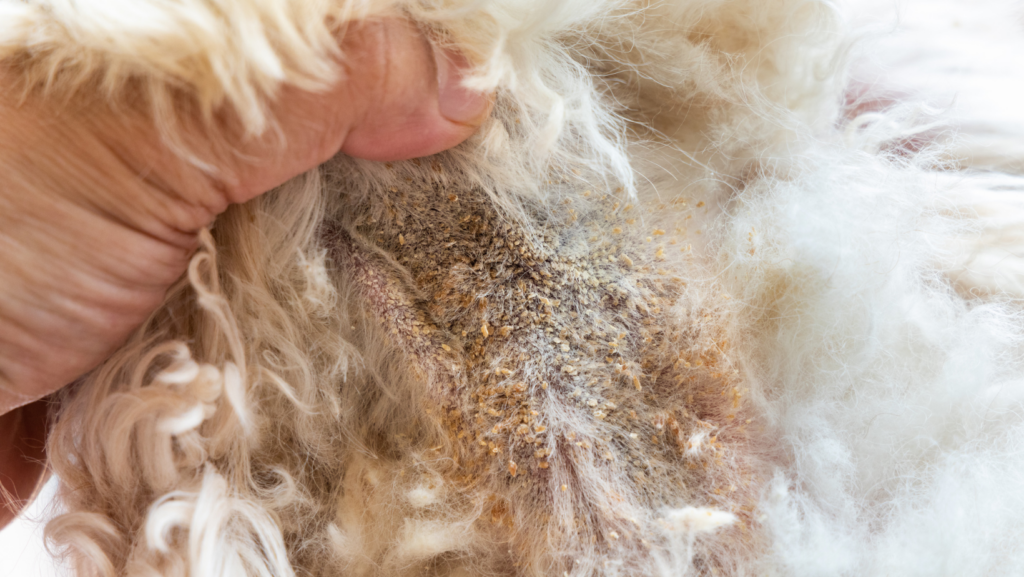
When you see a black spot on a dog’s leg, face, or elsewhere, make sure that it is a scab and not anything else. If it’s a scab, it will have a bumpy or crusty appearance.
Sometimes the scab could even appear black or dark in color when it has dried, as in on the verge of falling. However, if your dog is infested with fleas, then there will be black specks on its skin and coat. Your dog may even develop smooth black lesions due to hyperpigmentation which looks similar to scabs.
2. Yellow Scabs
When a dog has yellow scabs, it is due to seborrhea, a skin condition. If your pet is affected by seborrhea, you can find yellow flakes and scales all over his body.
3. Red Scabs
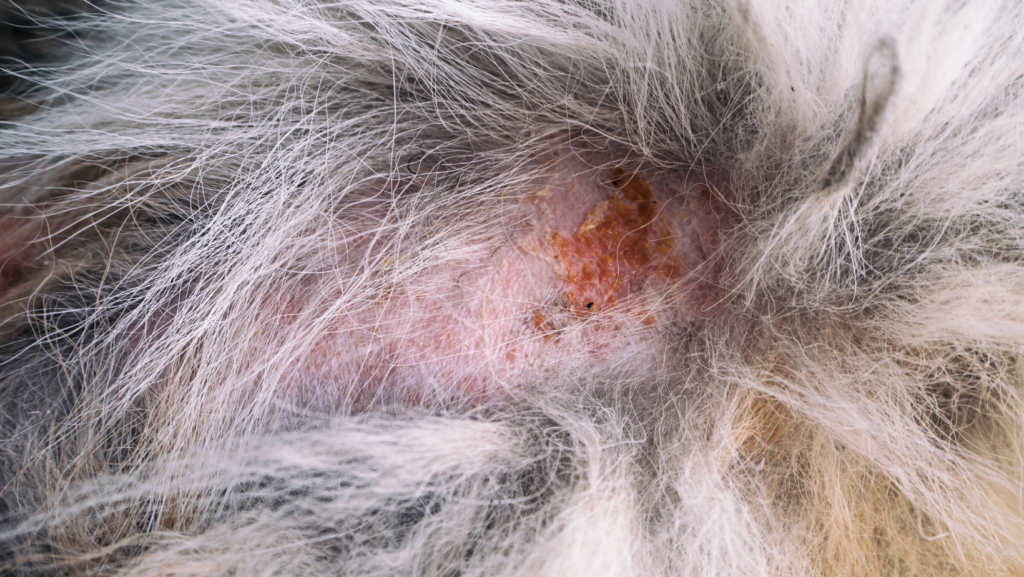
This is one of the commonest colors of the scabs. When there has been a lot of bleeding in the area of the wound or injury, it will eventually harden to form a red scab.
4. Raised Scabs
Scabs come in varying textures. They may look like small bumps or sores or even appear dry, and flaky. If the scab on your dog’s body seems raised, the reason could be a skin infection.
There are chances that your dog has been infected with scabies, a contagious parasitic infection. This can result in severe itching in your dog, leading to inflamed skin, and raised scabs all over his body. The commonly affected areas include their abdomen, chest, elbows, hocks, and ear flaps.
5. Itchy Scabs
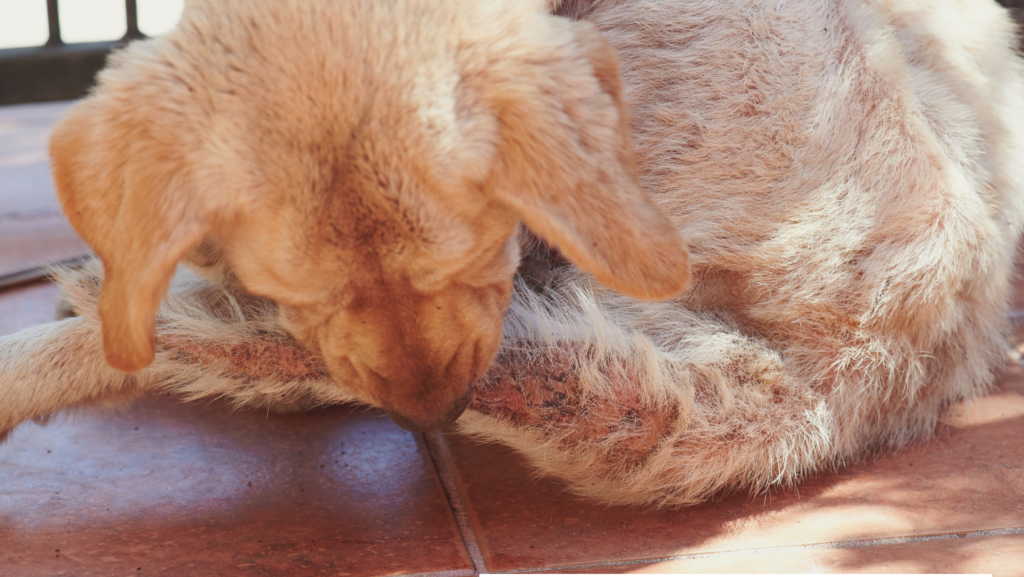
When the scabs get dried up and crusty, they become itchy. However, a scab caused due to an allergic reaction, or parasitic or bacterial infections like scabies, and staph will be itchy right from the onset.
In fact, the infection will cause so much of itching that it would lead to a scab outbreak. Treating the scab with antibiotic sprays, and anti-itch sprays when the tissues appear moist, and soft will help to relieve the dog from itching.
What Causes Crusty Scabs on Dogs?
There are several reasons why a dog may get scabs. It could simply be due to an injury or wound on his skin. Whereas there may be other causes as well, and some are too serious like allergic reactions, infections, hormonal imbalances, and so on. Read on to know why dogs may get crusty scabs.
1. External Wounds
If your dog has wounded or injured his face, leg, or any other part of his body when playing or due to any reason, then there will be scabs on his skin when the injury is in the process of healing. The scabs will take a reddish-brown color and will eventually darken when they are about to fall.
2. Allergies
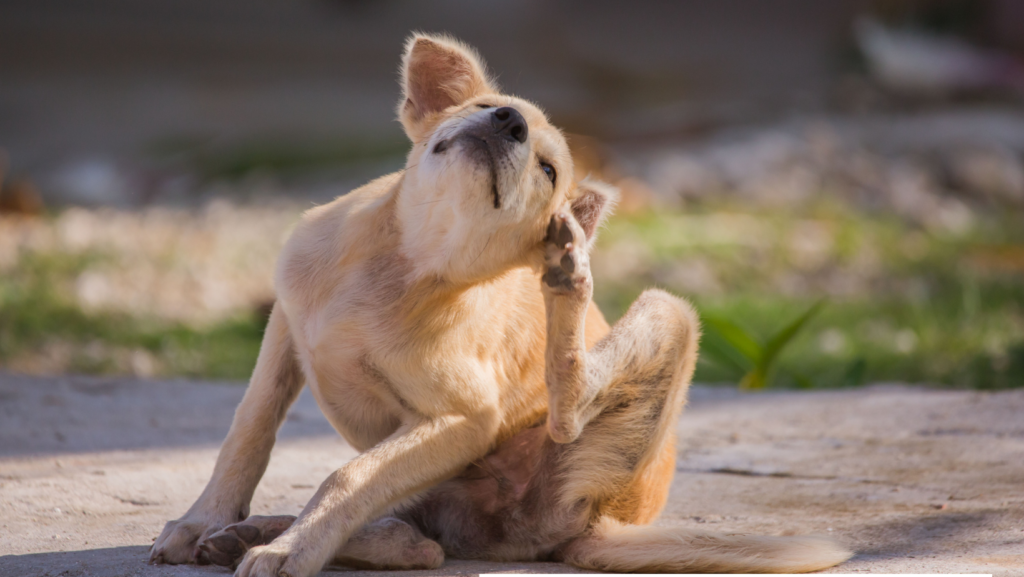
Dogs may develop allergies due to several reasons. These include food sensitivity and reactions to environmental agents like pollen, dust, pesticides, and so on. When the allergens get into the dog’s system, it could trigger contact dermatitis. If a dog is affected by contact dermatitis, he will develop bumps, rashes, and scabs all over his body, like his chest, neck, abdomen, chin, and the areas surrounding the groin.
3. Fleas
When your dog plays in the yard there are chances that he may be bitten by the fleas that flock found near debris, grass, sand, and sheds.
The same thing might happen when you take him to a dog park quite often. If your pet has been bitten by a flea, he would scratch his body a lot.
He may even resort to chewing and biting his skin, that’ll appear red. There would also be increased hair loss and he will have scabs all over his body.
4. Skin Infection
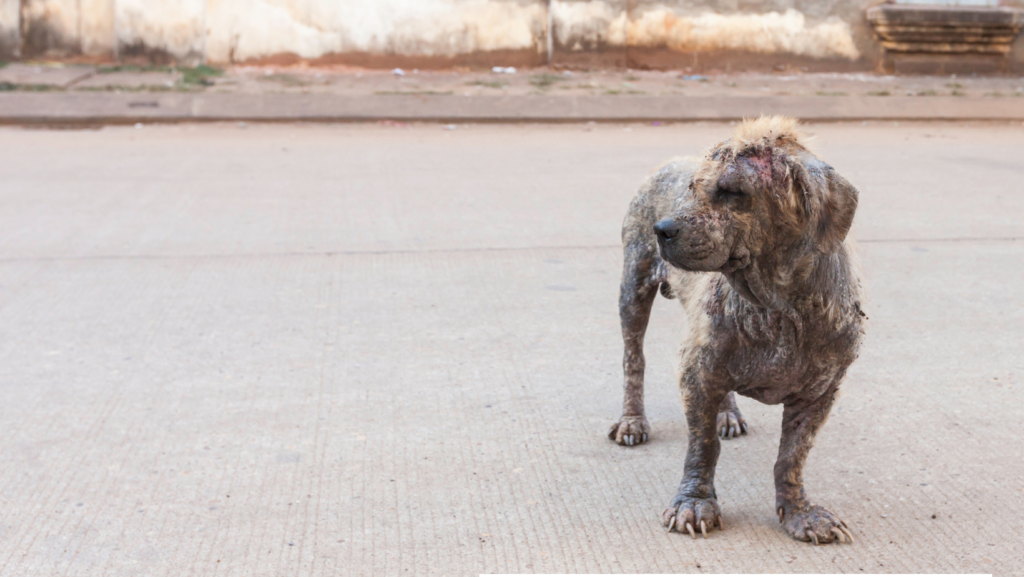
Besides allergies and fleas, dogs may be affected by a whole lot of other skin infections like mites, scabies, Demodex, and so on. One major symptom of all these conditions is itching, leading to a scab outbreak.
5. Hormonal Imbalance
When your dog is suffering from hormonal imbalance, the oil balance in your dog’s skin gets disrupted. You may notice that the color and texture of his skin are changing eventually. This will result in hair loss and even oily skin. You will even spot your pet licking, chewing, or itching his coat frequently.
6. Inappropriate Diet
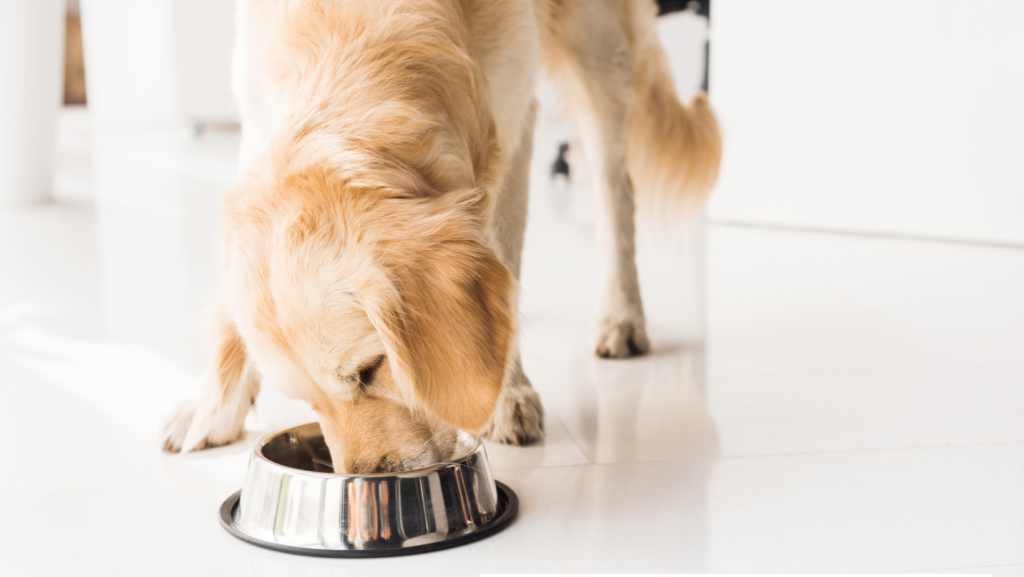
When your dog’s food doesn’t have the proper balance of vitamins, protein, and other essential nutrients, his skin and coat might get affected. It could dry up and even become dull, and brittle. When their skin is dried, it gets crusty, resulting in sores and scabs.
Dogs could get scabs anywhere on their body if they are nutrient-deficient. However, if you see crusty scabs around their eyes, this likely means that they aren’t getting sufficient amounts of zinc.
7. Cancer
If your dog has wounds or scabs on his skin which don’t heal quickly, then it could be the early signs of skin cancer. The scabs could look like raised bumps or lumps and may even be of an unusual coloration, especially as the disease progresses.
Common Areas Where Scabs Appear In Dogs
They can appear anywhere on your dog’s body, though the back and neck are the commonest areas for scabs to occur. Let us take a look at the areas where your dog can get scabs on its body.
1. Back
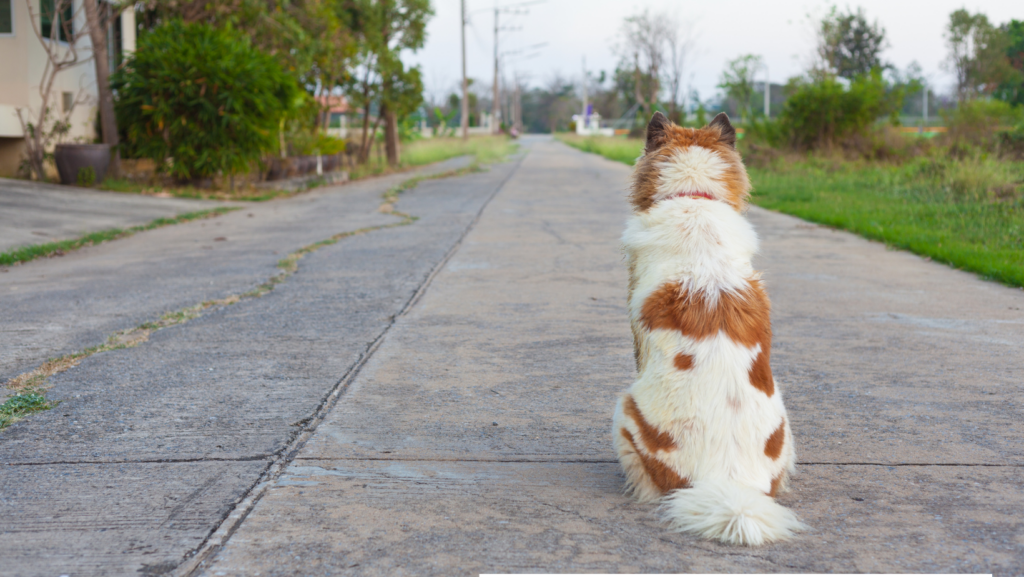
Most of the crusty scabs will appear on the dog’s back. If the scab is due to an allergic reaction, you will notice redness, itching, and hair loss around that area.
2. Belly
The belly is another common area beside the back where scabs can develop. If the scab is a result of a skin infection or allergy, the belly will turn red, and your dog won’t be able to resist itching it with his paws.
3. Nose
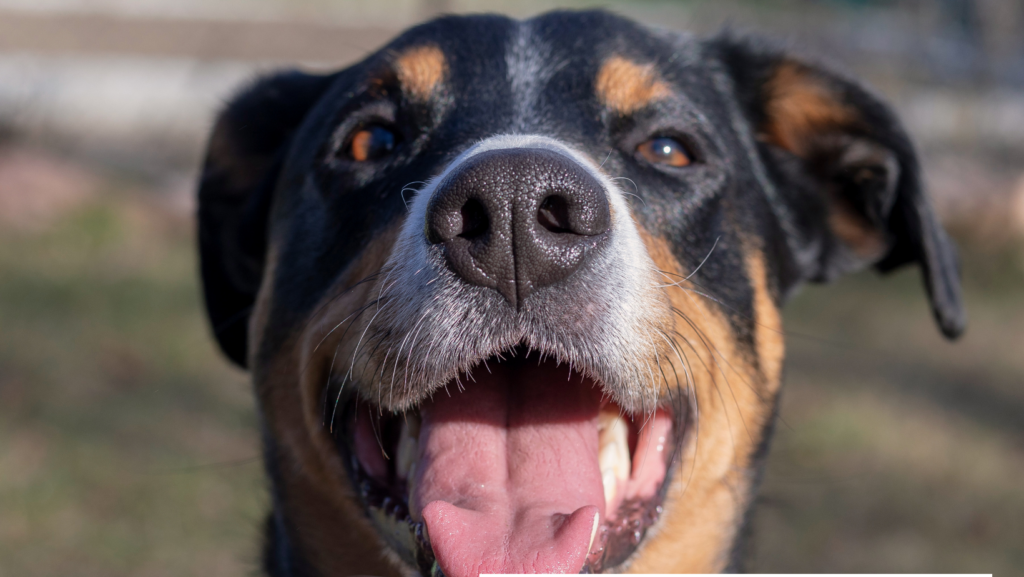
If your dog lives in a crate for most of the time, he may rub his nose against the crate door. This may lead to friction and cause scabs to develop on his nose. When your dog has ringworm, then also he may develop scabs around the nose, and face, alongside other areas of his body.
4. Armpit
Scabs developed around their armpits are mostly an outcome of self-trauma that could be either due to any underlying medical condition or a behavioral issue. When dogs suffer from self-trauma, they’ll resort to a whole lot of behaviors like tail-biting, licking their paws, scratching their face and neck, and so on.
5. Ears
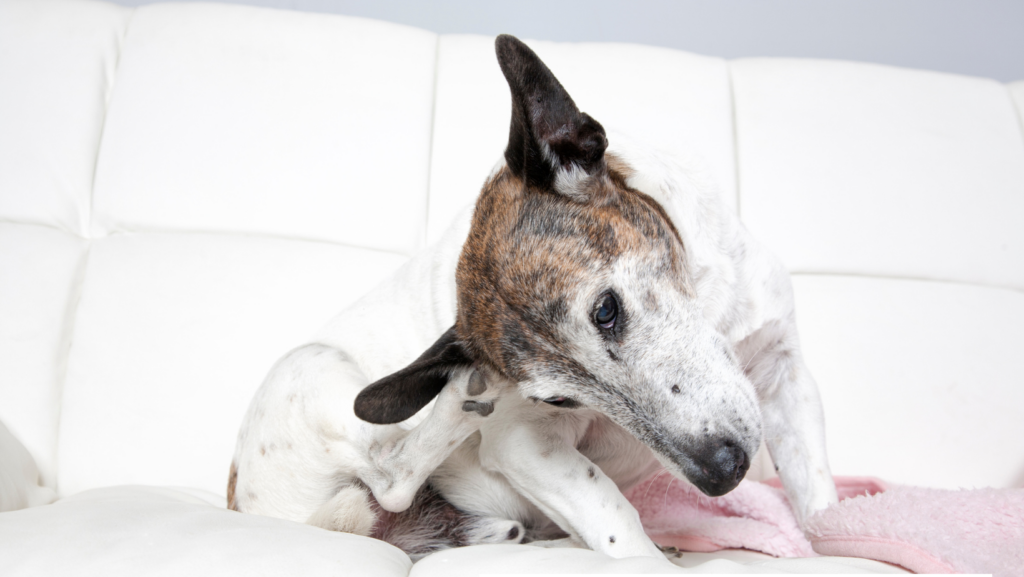
When your dog has scabs in or around his ears, the reasons could either be an ear infection or even allergies. That’s why it is necessary to clean their ears well at least once a week.
How to Treat Crusty Scabs on Dogs?
If the scabs aren’t that big and haven’t spread all over the body, they’ll go away on their own. But, if it is big or has spread throughout its body, then medical intervention is needed at the earliest.
1. Some Scabs Heal On Their Own
If it’s a single scab over a small area then it isn’t that serious. It is likely to be caused due to an injury or trauma. If it doesn’t appear inflamed or is not causing discomfort to your dog then there’s not much to worry about, as it will heal on its own, with proper care at home. Just make sure that your dog doesn’t scratch that area too much.
2. Talk to the Vet
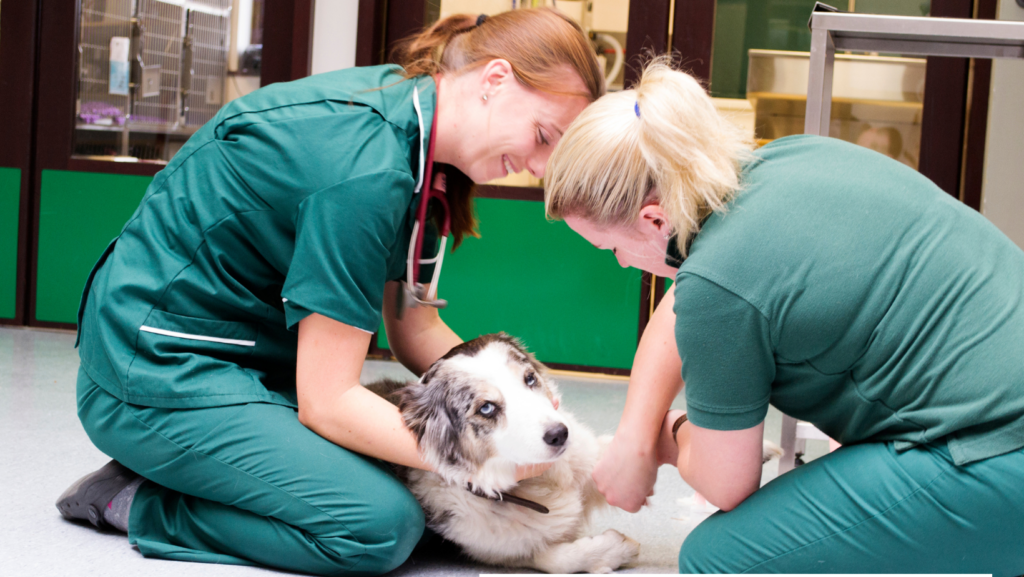
When the scab gets inflamed, and your dog can’t stop licking or scratching, you must consult a vet at the earliest. Even if the scab isn’t confined to a single area but is spread all over your dog’s body and is bleeding profusely, in that case also, a vet’s appointment is needed.
After examining the scab thoroughly, the vet will prescribe pain medications, antibiotics, and even medicated ointments or shampoos. The treatment depends on the severity of your dog’s condition.
3. Probable Home Remedies
It isn’t a good thing to try home remedies on your dog without seeking a medical expert’s advice. If your vet has consented to home remedies, coconut oil will be a good option.
It has anti-bacterial, and anti-fungal properties that help reduce pain and inflammation. Oatmeal works wonders to relieve itchiness because of its anti-inflammatory properties.
How to Prevent Crusty Scabs?
Crusty scabs can occur in dogs due to allergies, wounds, cuts, injuries, or any underlying medical condition. When you take care of your dog’s hygiene, and diet you can lessen the occurrence of scabs to a great extent.
1. Keep Your Dog Clean
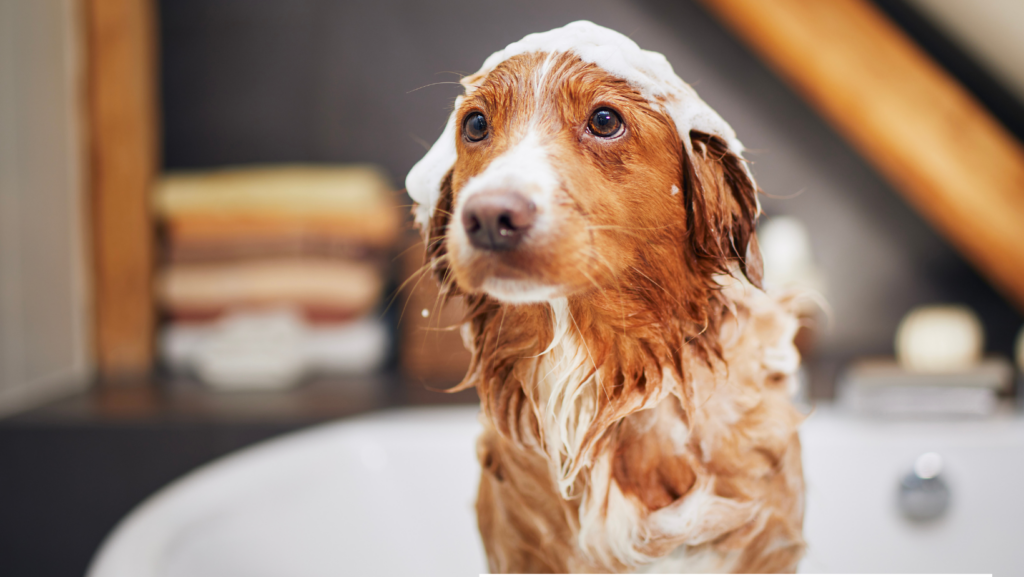
Your dog should be bathed at least once a month. If you have an active breed that spends a lot of time outdoors, then make sure you give him a rub down using a moist or damp cloth whenever he has had a long day outside. Also, brush your dog’s coat as per the requirement.
If you have breeds with short or smooth coats, then a weekly brushing would be fine. For heavy shedding breeds, brushing the coat twice or thrice a week is needed. This will prevent dirt and debris from accumulating and help keep the coat clean.
2. Make Sure He Doesn’t Get Access to Fleas
If your dog has increased access to the outdoors, then it is essential to take him on a leash. This will help owners control their movement. Make sure you keep them away from areas highly concentrated with fleas.
3. Give Your Dog A Proper Diet
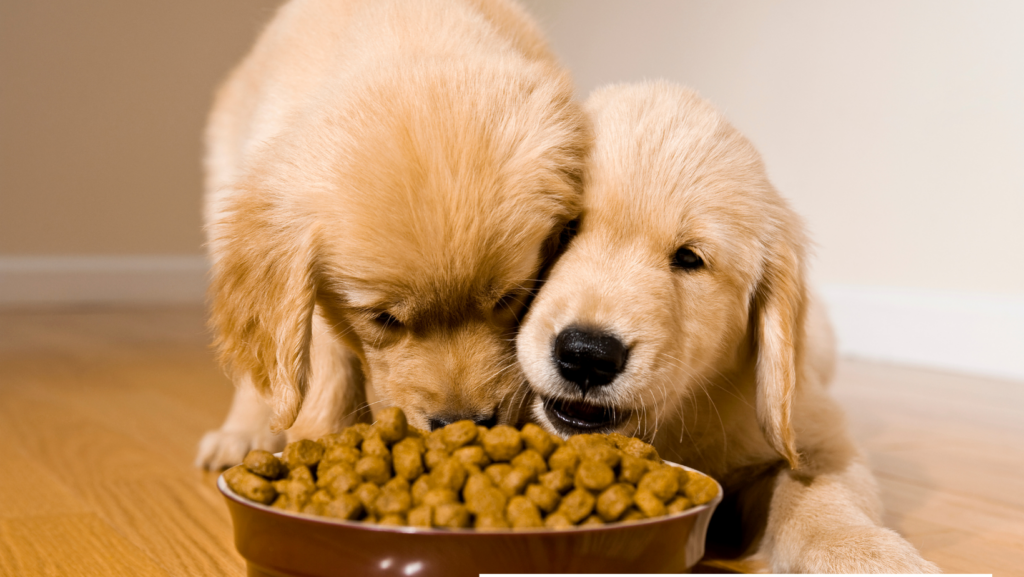
When your dog gets a balanced diet comprising vitamins, proteins, fats, minerals, and other essential nutrients, his coat and skin will be in good form.
If you are giving your dog commercially-manufactured food, make sure you go for the brands that cater to all the nutritional requirements of your pet. In case you decide to put him on a homemade diet, be vigilant about not missing out on the essential nutrients.
4. Minimize Chances of Wounds and Injuries
When you take the initiative of limiting injuries in your dog, it will also lessen the occurrence of scabs. If your dog plays within a fenced yard that is well-maintained then he will be at a lessened risk of injuries.
However, dogs that run through woods and bushes would be more prone to wounds. So, when taking him for a walk or to a dog park, leash your dog so that he doesn’t run haywire. Also, if your yard or garden has thorny bushes, try setting a boundary by fencing that part.
Signs That Your Dog’s Scabs Need Veterinary Attention
Most scabs heal on their own and may take as less as three days or as long as two weeks. In such cases, treatment isn’t needed unless it comes in the way of your dog’s daily life.
However, if the scab is there for more than two weeks on your dog’s body, and if it appears inflamed, then you should not delay in fixing an appointment with the vet. Also, if the wound is bleeding heavily, has turned red, or appears swollen, you would need to get in touch with a vet at once.
FAQ’s
Ans: The cost depends on the severity of the scab. If the vet advises an e-collar for your dog, it will come for $10-$20. A dog cone alternative that’s a lot more comfortable is $20-$40. When the scab is because of any skin condition, the cost may be close to $100. Then there are costs for the medicated shampoos and ointments prescribed by your vet, totaling $40.
Ans: You should rinse it with warm water and then place a wet cloth around the scab. This will help the scab remain moist and prevent the surrounding skin from being dry and itchy. If your vet has prescribed a topical ointment, you can apply it around the scab. This will help the scab to fall on its own.
Conclusion
To sum it up, scabs formed due to wounds or injuries aren’t a cause for concern. However, if the scab remains on your dog’s skin for a prolonged period, then you would need to take a call and consult the vet. With proper treatment and adequate care, the scab will heal soon.
Meet Madison Phillips, your compassionate guide to pet well-being. With experience from VCA Animal Hospitals and Laxton Vet Clinics Bellaire Inc. Madison honed her skills and embraced the balance of medical expertise and compassion, through her articles, she simplifies pet care, whether you’re a newbie or an experienced pet parent.

